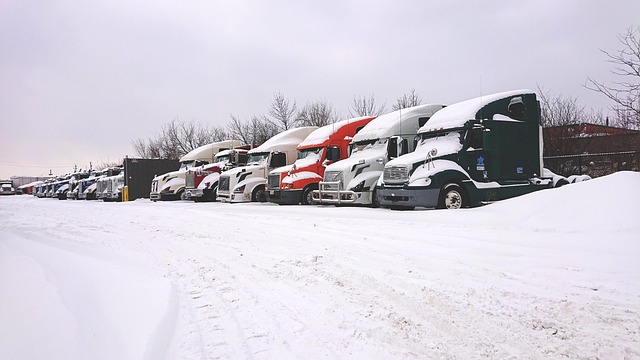Looking to register your car in California? This comprehensive guide breaks down the process, ensuring a smooth transition. From understanding essential requirements to gathering vital documents, you’ll learn what’s needed to get your vehicle on California’s roads legally. We outline both in-person and online registration methods, providing a step-by-step process and emphasizing the crucial role of a DMV VIN verifier for accurate identification.
- Understand the Requirements for Car Registration in California
- Gather Necessary Documents for Registering Your Vehicle
- Visit a California DMV Office or Use the Online System
- Complete the Registration Process: Step-by-Step Guide
- Verify Your Vehicle's VIN (Vehicle Identification Number) with DMV
Understand the Requirements for Car Registration in California

Registering a car in California involves meeting specific requirements to ensure vehicle safety and ownership verification. One crucial step is understanding that all vehicles, regardless of age or type, must undergo a Vehicle Identification Number (VIN) inspection. This process is typically carried out by a designated DMV Vin Verifier, who checks for any discrepancies or potential fraud related to the VIN.
For California residents, owning a car entails obtaining a registration certificate from the Department of Motor Vehicles (DMV). Before registering, it’s essential to ensure your vehicle is in compliance with emission standards and has passed all necessary safety inspections. Additionally, you’ll need to provide proof of insurance, complete relevant forms, and pay the required fees. Using a mobile Vin Verifier can facilitate this process by offering convenient and often faster alternatives for VIN inspection, especially when combined with online registration services.
Gather Necessary Documents for Registering Your Vehicle

Before you start the registration process, ensure you have all the required documents. The California Department of Motor Vehicles (DMV) requires a range of information to verify your vehicle’s identity and your eligibility to register it. This includes proof of ownership, typically in the form of a vehicle bill of sale or a title document, as well as valid identification such as a driver’s license or state-issued ID card. Additionally, you’ll need to provide the Vehicle Identification Number (VIN) from your car, which can be found on the vehicle’s registration label or on the engine block.
For a seamless and efficient process, consider using a DMV VIN verifier service for your mobile vin inspection. This allows you to verify the VIN online or over the phone before visiting the DMV, saving you time and effort. Having all these documents readily available will help streamline the registration process, so make sure to gather them before you begin.
Visit a California DMV Office or Use the Online System

You have two options when it comes to registering your car in California: visit a local DMV office or complete the process online. Both methods require accurate vehicle information, including the Vehicle Identification Number (VIN). For added convenience and time-saving benefits, consider using a mobile VIN verifier. This tool allows you to capture and transmit your VIN digitally, streamlining the registration process.
Using an online system or a mobile VIN inspection service is straightforward. You’ll input your car’s details, and the platform will verify the VIN through a database check, ensuring its validity. This step is crucial as it helps prevent fraud and ensures your vehicle’s records remain accurate. With a legitimate VIN verification in hand, you can confidently navigate the registration process, whether you’re doing it in-person or remotely.
Complete the Registration Process: Step-by-Step Guide

Completing your car’s registration involves several key steps to ensure all necessary paperwork is accurately filled out and submitted, along with any required fees paid. Start by gathering important documents such as your vehicle’s registration certificate from its previous owner(s), proof of insurance, and a valid driver’s license. Next, visit a California Department of Motor Vehicles (DMV) office or use the DMV’s online services to initiate the process, selecting “Vehicle Registration” on their website.
For accuracy in identifying your vehicle, utilize a DMV vin verifier tool to check the Vehicle Identification Number (VIN). This step is crucial for both security and ensuring you’re registering the correct car. After confirming the VIN, select the appropriate registration type based on your vehicle’s age and use, then fill out the application form completely. Submit all required documents and fees to finalize the registration process, either in-person or through a mobile vin inspection service if preferred.
Verify Your Vehicle's VIN (Vehicle Identification Number) with DMV

Before registering your car in California, it’s crucial to ensure that your vehicle is legitimate and has no outstanding issues. One critical step in this process is verifying your Vehicle Identification Number (VIN). The DMV offers a simple method to do this using their online tools or by visiting a local office. By checking the VIN, you can confirm important details about your car, such as its make, model, year, and any previous owners, which are all essential for a successful registration.
A mobile vin verifier or vin inspection service might be handy if you’re unable to visit a DMV facility. These services allow you to enter your VIN online or via a mobile app, providing instant access to vital vehicle information. This additional layer of verification can ensure that you’re making an informed decision when purchasing or registering a used car, thus avoiding any potential issues down the road.
Registering a car in California involves understanding specific requirements and gathering essential documents. By following the step-by-step guide outlined in this article, from verifying your vehicle’s VIN with a trusted DMV vin verifier to completing the process at a California DMV office or online, you can ensure a smooth registration experience. Remember to keep all necessary paperwork handy for future reference and to maintain compliance with state regulations.



